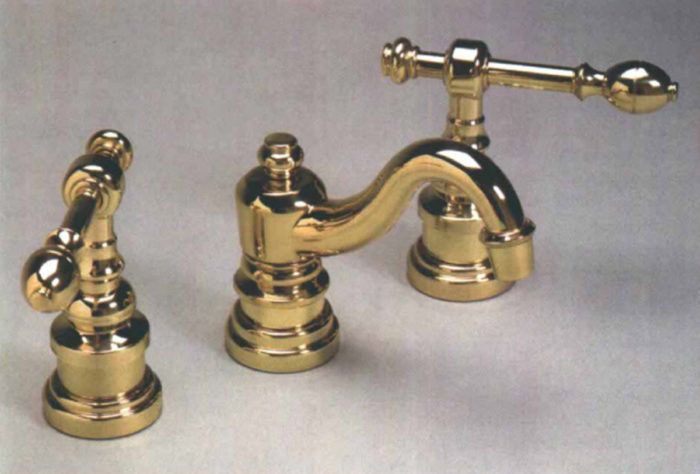Choosing a Lavatory Faucet
Before you're sold on style alone, consider how the faucet is made, the type of valve it uses, and the finish.

Synopsis: The article discusses all you really need to know before choosing a faucet for your bathroom sink: types of valves, surface finishes, materials, maintenance issues, and other features. One potential concern for installers: Just how many pieces must be assembled?
Here’s a shocker: The bathroom faucets in my house don’t look like the ones in catalogs. Theirs are gleaming, germ-free, untarnished, and unsullied. My bathroom faucets are usually covered with smudges, toothpaste gunk, soap scum, and whatever else sloughs off my kids, and the faucets are usually left dripping.
The lavatory faucets at my parents’ house, on the other hand, look a great deal more like the ones in the catalogs. And theirs never drip. The deal is, however, that their kids are grown, so their daily routine takes in a lot less grime than mine.
Clearly, there should be different faucets for different lifestyles. Mine should be made of titanium and contain a self-washing mechanism, like a self-cleaning oven, that clicks on every night at bedtime. Every morning, my faucets would be radiant. Until the kids woke up.
Unfortunately, if you’re a parent who’s in the market for a lavatory faucet, the self-cleaning type exists only in your head. There are lots of other options out there, though. You’ll want to consider the type of handles—lever or traditional, depending on the strength of the hands turning the tap—the finish, the basic material it’s made of, and the price.
Solid brass forms the best faucet
Whatever their ultimate finish on the outside, the best faucets are solid brass on the inside. Brass is an alloy that’s more or less composed of zinc and copper with small amounts of other materials such as lead. Brass is durable and corrosion-resistant, and it can be machined to close tolerances. Forged and machined brass components typically have smoother surfaces and lower lead content than cast brass, which is more porous and prone to pinhole leaks.
Less expensive faucets are made from metals such as zinc, which many refer to as “pot metal,” or from thin formed steel shells that contain the necessary piping. Pot metal casts easily and has a smooth surface yet quickly corrodes in contact with water if unprotected by a plated surface such as chrome. Thin steel-shell faucets can be well made or flimsy, so put your hands on the faucet and give it a good going over before buying it.
Plastics are often used as the basic material in faucets because they are easily molded, have a smooth surface and aren’t prone to scale buildup. However, plastic-bodied faucets aren’t as durable as metal and just aren’t designed to last long. Also, moving parts made of plastic can wear out quickly. Plastic-body faucets cost only $10 or so; metal ones cost more.
The beauty of a finish is more than skin deep
Whatever the basic material of a faucet, a critical element in its manufacture is the finish that goes on it. The most popular finish is polished chrome, which is hard and durable. Chrome, which is electrochemically deposited over nickel plating, doesn’t oxidize, won’t corrode, and won’t easily scratch when scrubbed with abrasives.
For more photos and details, click the View PDF button below:
Fine Homebuilding Recommended Products
Fine Homebuilding receives a commission for items purchased through links on this site, including Amazon Associates and other affiliate advertising programs.

Get Your House Right: Architectural Elements to Use & Avoid

All New Bathroom Ideas that Work

Code Check 10th Edition: An Illustrated Guide to Building a Safe House


























